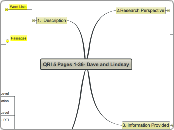jonka David Szmania 15 vuotta sitten
866
QRI 5 Pages 1-36- Dave and Lindsay

jonka David Szmania 15 vuotta sitten
866

Lisää tämän kaltaisia
3rd grade and up test both types of passages
more as you move to older grades
start in pre-primer
science, SS, math
differentiate between memory and passage understanind
silent (3rd and up)
oral (2nd and below)